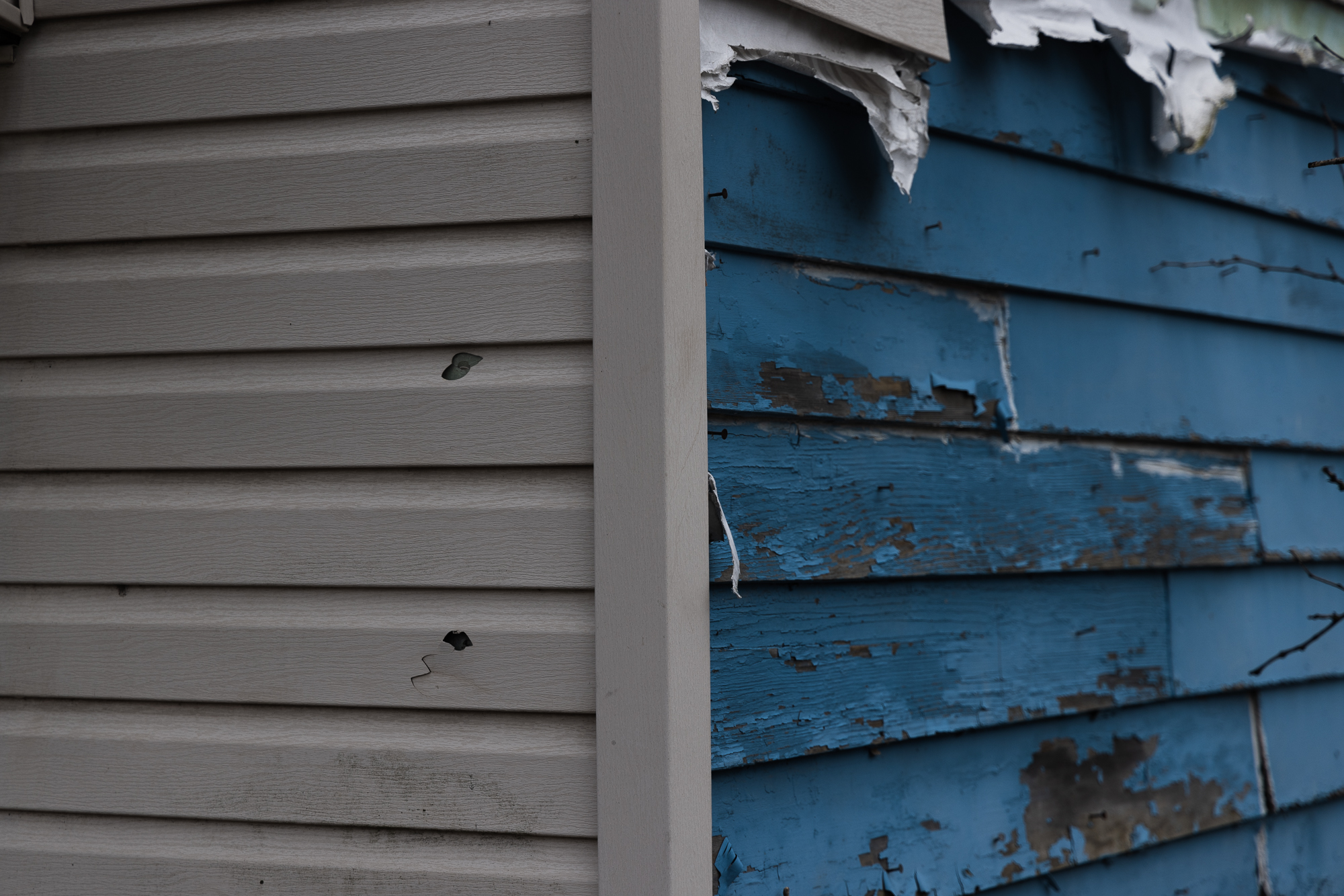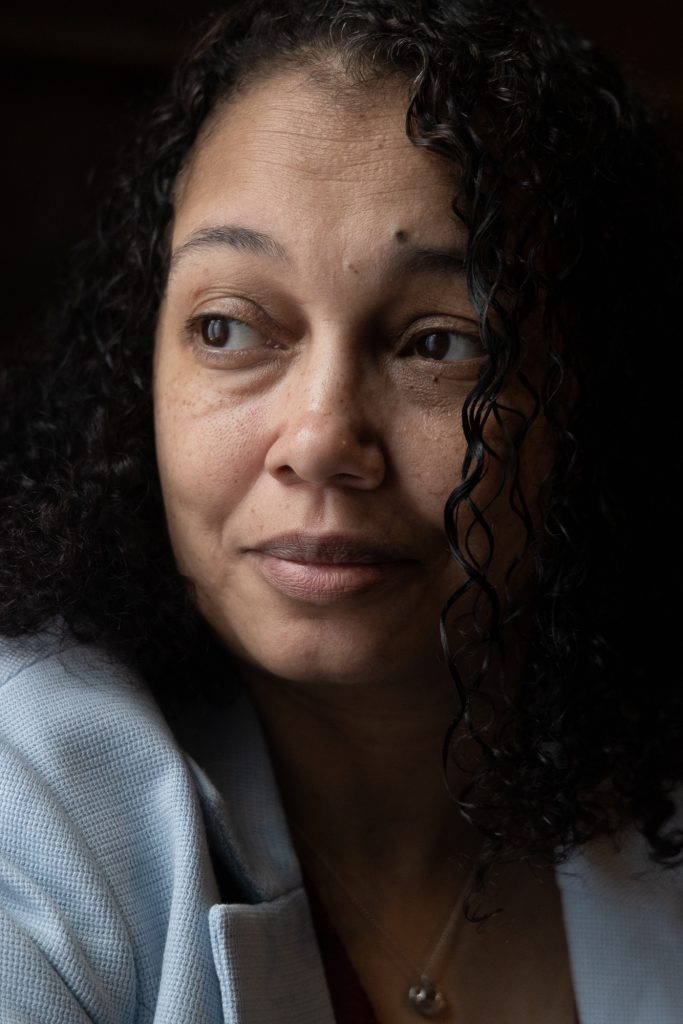
Poisoned in Syracuse
misinformation caN CAuse parents to MISS THE WARNING SIGNS OF LEAD POISONING IN CHILDREN.

ceanna Fair thought lead was a thing of the past. Her family’s generational history with lead poisoning could not prepare her for when her granddaughter was affected in 2018.
Fair’s brother was poisoned in 1982 when he was 2. Their family had just moved to Syracuse from New Jersey and did not know about their new city’s prolonged struggle with lead exposure.
Fair continues to provide care for her brother. But because her granddaughter did not exhibit the same behavior — such as severe seizures and loss of cognitive abilities — she never suspected the child’s fate would be the same almost four decades later.
Lead was the furthest thing from Fair’s mind as she witnessed her 4-year-old granddaughter exhibit abnormal behavior. The grandmother thought it was odd that her granddaughter was eating non-food items and exhibiting hyperactive behavior. The child also could not sit still –– even though she had passed Onondaga County’s checkmarks for lead testing at ages 1 and 2.
After months of going from specialist to specialist and ruling out countless neurological disorders, Fair’s doctor tested the child for lead and found an elevated blood level (EBL) of 17. The high level triggered an investigation by the Onondaga County Health Department, which investigated all of the environments the child was in – including Fair’s home, where she provided childcare for her grandchildren.
After all tests were completed, her home came back positive for lead.
“We were trying to figure out what was causing this,” Fair said. “There is sometimes more fear of not knowing what a condition is than actually having to deal with what the actual condition was. There was a lot of fear and frustration trying to get a diagnosis.”

Fair’s story resembles other families in Syracuse. Too often, experts like Dr. Travis Hobart said, families think lead poisoning is a thing of the past, in part because of misinformation on the issue. Many patients are surprised that there is still lead poisoning in the city and believe that the only way to be poisoned is through eating lead paint, said Hobart, who runs the Central/Eastern NY Lead Poisoning Resource Center at Upstate University Hospital.
“A big misconception is that eating paint chips is how you get exposed and if you’re not eating paint chips you’re fine,” Hobart said.
But “eating paint chips” is not the only way lead can poison. The majority of cases involve children consuming dust from deteriorated paint, Hobart said. As the dust settles on the ground and young children play and crawl on the floor, the particles end up in their mouths.
The most common areas that need checkups are windows, doors, porches and floors, Hobart said. Though lead-infused paint is no longer used when painting homes, children can still be at risk when the new paint breaks down. Homes built before the 1970s often contained lead-based paint, and many children still live in those homes, especially in older, poorer neighborhoods like Syracuse’s South Side.
As of 2021, 10.5% of children in Syracuse have been exposed to lead paint, according to the most recent numbers from the Onondaga County Health Department.
Families in Syracuse also sometimes overestimate the risk of lead poisoning from drinking water, probably as a result of the news coverage of the crisis in Flint, Michigan, Hobart said. But while there are old pipes in Syracuse, the water is treated well, and rarely are there lead-related cases from the water, he said.
Still, it’s important to take precautions. Hobart said people should avoid drinking hot tap water and should run cold water for a few minutes before drinking it. But the biggest concern in Syracuse, he added, is the lead paint since there is a higher concentration of lead in paint than in water.
He said misinformation about lead poisoning contributes to the problems caused by the lack of information on the topic.
“The biggest concern is that it’s not a concern anymore,” Hobart said. “When I talk about lead, people are sometimes surprised to know that lead still is a health concern, that there’s still lead poisoning out there.”
Several community organizations are working to get that message out. The “Layla’s Got You” program — a community organization that counters misinformation in women’s health and targets Black and Brown women in Syracuse — has opted for community meetings to engage in conversations surrounding parental concerns with lead and address any gaps in information.
“LAYLA is specifically relevant because it’s our demographic and it’s us,” said Sorcha Ingersoll, an ambassador for LAYLA. “We’re talking about an issue that’s directly impacting the Black and Brown community — specifically Black and Brown women and Black and Brown children.”
LAYLA is also fighting misinformation about lead, especially regarding women’s health and young mothers. One of their tools to fight: having monthly meetings targeting young mothers between 18 and 25. The meetings serve as a place where community members can learn about how lead affects their children and explore best practices to address the issue.
“The problem is we’re uninformed,” Ingersoll said. “If you don’t know about a problem, you can’t find answers for a problem.”
The lack of information about lead poisoning is compounded by the fact that children who are lead poisoned often don’t show symptoms, at least at first, Hobart said. When symptoms do appear, they can be interpreted as vague yet age-appropriate conditions such as stomach pain or constipation, Hobart said. In May of 2021, the Centers for Disease Control and Prevention (CDC) changed the national standards for elevated blood levels from 5 micrograms per deciliter (µg/dL) to 3.5 (µg/dL). But in New York state, it still remains at 5 (µg/dL).
“Lead is a brain toxin and causes long-term effects on a child’s development,” Hobart said. “There is no safe level. Any amount of lead can cause adverse effects.”
Because parents lack information, Hobart spends a lot of time helping them process the news of their child’s diagnosis. Parents often feel powerless, guilty and overwhelmed. They may not even realize their children are victims of lead poisoning. But it is not their fault, he said, noting that they often have a myriad of other problems to deal with. Because many families are living in poverty, and some may have a lack of transportation or consistent income, having their child hospitalized and lead poisoned contributes to the stress.
In Onondaga County, the majority of children with elevated lead levels reside in the city of Syracuse, said Debra Lewis, the lead program coordinator for Onondaga Health Department’s Lead Poisoning Prevention Program.
The same five zip codes — 13203, 13204, 13205, 13207 and 13208 — have shown the highest numbers of lead cases consistently since 2007, Lewis said. The data shows the areas of high lead levels overlap with the areas facing issues of health equity and socioeconomic disparity along with areas of high concentrations of families living in poverty and rental housing. Those families see code violations in their homes and receive social service benefits, Lewis said.
“We knew before we put the data out that, anecdotally, children of color who lived in rental housing and impoverished housing in poorly maintained housing were going to be the group of children that had a higher rate of lead poisoning,” Lewis said. “We see that in the data.”
Lewis said families experiencing lead issues often do not know where to call. Whether families need a city inspector or a medical program for their child, they often end up calling the wrong department and further redirection to the proper resources.
To help combat misinformation and reduce confusion, organizations like the Center for Court Innovation help provide that guidance through community initiatives such as the Kitchen Table Talks — targeting members of the West Side, many of whom speak Spanish. The talks are offered both in Spanish and English. People offer their homes and host meetings to inform about the Syracuse lead issue and answer any questions. At every meeting, a member of the county Health Department is present to answer questions about the issue.
“It’s very common to perceive surprise in participants when they know that children can die, and the effects of lead in the body are not reversible or curable,” Nino-Cordero said, pointing out that misinformation is a problem too.
“Some of them think that bleach can clean lead,” she said. “They do not know that lead is a metal and that you cannot kill a metal.”
The Kitchen Table Talks are meant to increase awareness about lead and derive solutions.
Addressing lead poisoning at the community level is a widespread effort.
Fair, who is also a part of Families for Lead Freedom Now, shares her family’s story with other groups in Syracuse fighting lead poisoning, hoping her story can save others. The organization consists of families who have been directly affected by lead poisoning in Syracuse.
Members serve as advocates for families struggling to navigate the process of helping their children who have been affected by lead. Many families — including Fair’s — say their landlords did not provide any pamphlet from the Environmental Protection Agency informing them on the dangers of lead and what to look for.
“For a lot of our families, we’re finding out there’s a lack of information,” Fair said. “We need to be educating those families more on what to look for.”
